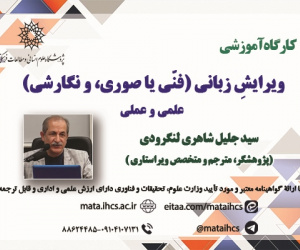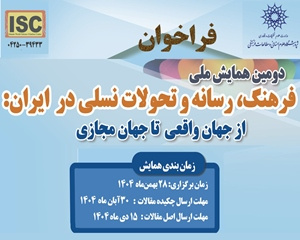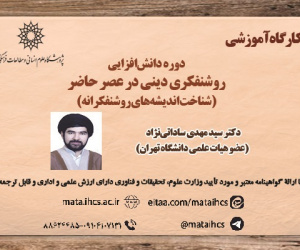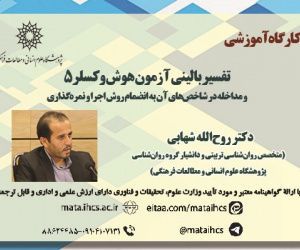مرور نظام مند رویکردها و روش های ارزیابی تاب آوری سیل در محیط های شهری (مقاله علمی وزارت علوم)
درجه علمی: نشریه علمی (وزارت علوم)
آرشیو
چکیده
رشد جمعیت و شهرسازی دو عامل اولیه در افزایش خطر سیل در مناطق شهری به شمار می روند. هم زمان با گسترش روز افزون شهرنشینی در بسیاری از شهرها تغییرات کاربری زمین منجر به افزایش حجم رواناب های سطحی و تغییر رژیم های سیلابی رودخانه ها شده است. از این رو سیل شهری یکی از مخاطراتی است که به طور مستقیم و غیر مستقیم آثار زیان بار خود را بر شهرهای مختلف ایران وارد ساخته است. از آنجا که تاب آوری با ترکیب مؤلفه های مختلف درک جامعی از شرایط فراهم می سازد می تواند در ایجاد ابزارهای مدیریت ریسک سیل شهری مثمر ثمر باشد. برای این که بتوان از مفهوم تاب آوری به طور مؤثر در فرایند تصمیم گیری و مدیریت سیلاب های شهری استفاده کرد، لازم است تاب آوری شهر در برابر مخاطره سیل موردسنجش و ارزیابی قرار گیرد. با وجود این، سنجش تاب آوری در محیط های شهری در برابر سیل به دلیل عدم شفافیت لازم در زمینه رویکردهای روش شناختی با چالش جدی مواجه است. بر این اساس در این مطالعه با مرور نظام مند و فراتحلیل مطالعات انجام شده در زمینه ارزیابی تاب آوری محیط های شهری در برابر سیل رویکردها و روش ها در این زمینه مورد واکاوی قرار گرفته است. مطابق یافته های تحقیق روش های ارزیابی تاب آوری محیط های شهری در برابر سیل، به سه دسته کمی، نیمه کمی و کیفی تقسیم می شوند. روش های کیفی از تنوع کمتری نسبت به روش های کمی برخوردارند و غالباً شامل روش مصاحبه گیری و چارچوب های مفهومی نظری می شوند. غالب روش های ارزیابی در این زمینه روش های کمی و نیمه کمی هستند که می توان آن ها را در دو دسته پرکاربرد یعنی روش های مبتنی بر شبیه سازی و روش های مبتنی بر شاخص سازی جای داد. در رویکرد مبتنی بر شبیه سازی به طورکلی از مدل سازی هیدرولوژیکی و شبیه سازی سیلاب استفاده می شود. روش های مبتنی بر شاخص سازی در شکل های متفاوت توسعه یافته اند اما به طورکلی از اصول یکسانی پیروی می کنند و می توان از آن ها برای تحلیل تاب آوری دیگر انواع مخاطرات در عرصه های جغرافیایی نیز استفاده کرد.Systematic review of flood resilience assessment approaches and methods in urban environments
Population growth and urbanization are two primary factors in increasing the risk of flooding in urban areas. Along with the increasing urbanization in many cities, changes in land use have led to an increase in the volume of surface runoff and a change in the flood regimes of rivers. Therefore, urban flooding is one of the risks that directly and indirectly have harmful effects. It has entered various cities in Iran. Since resilience thought provides a comprehensive understanding of the conditions by combining different components, it can be fruitful in creating urban flood risk management tools. To be able to effectively use the concept of resilience in the process of decision-making and management of urban floods, it is necessary to measure and evaluate the city's resilience against flood risk. Despite this, the measurement of resilience in urban environments against floods faces a serious challenge due to the lack of transparency in the field of methodological approaches. Therefore, this study aims to clarify the approaches and methods with a systematic review and meta-analysis of the studies conducted in the field of assessing the resilience of urban environments against floods. According to the findings of the research, the methods of assessing the resilience of urban environments against floods are divided into three categories: quantitative, semi-quantitative, and qualitative. Qualitative methods have less diversity than quantitative methods and often include interviewing methods and theoretical conceptual frameworks. The majority of evaluation methods in this field are quantitative and semi-quantitative methods, which can be placed in two widely used categories, i.e. simulation-based methods and indexing-based methods. In the simulation-based approach, hydrological modeling and flood simulation are generally used. Methods based on indexing have been developed in different ways, but they generally follow the same principles and can be used to analyze the resilience of other types of risks in geographic areas.







